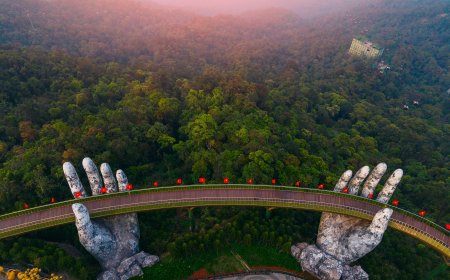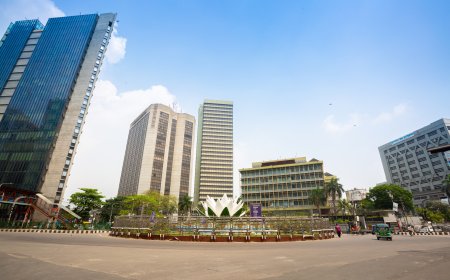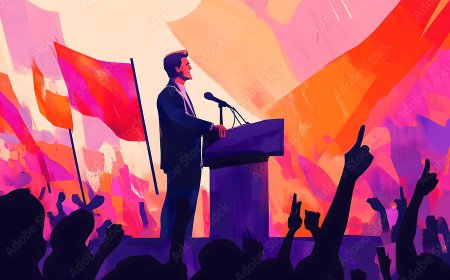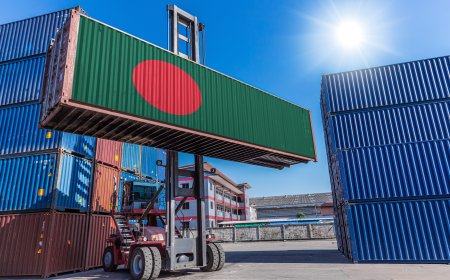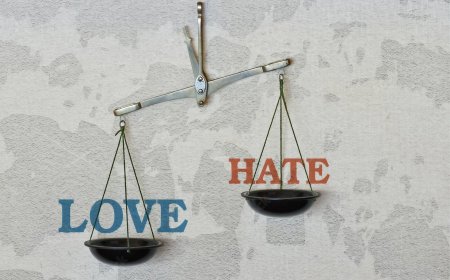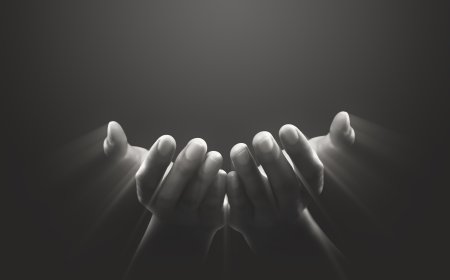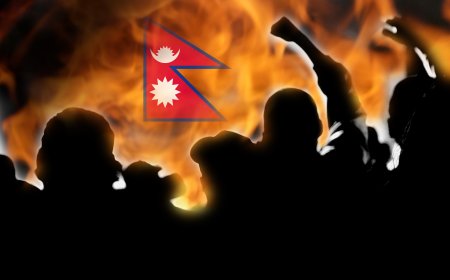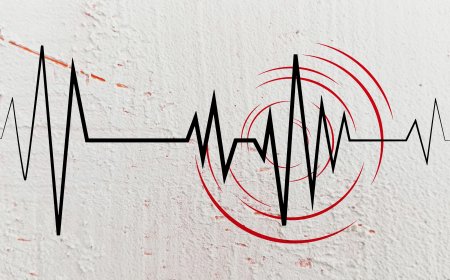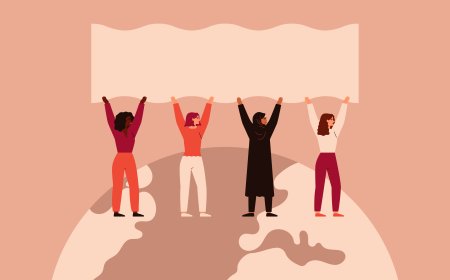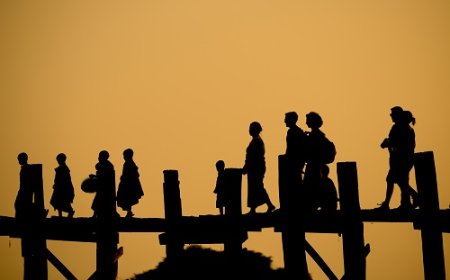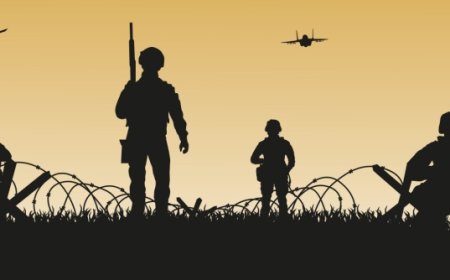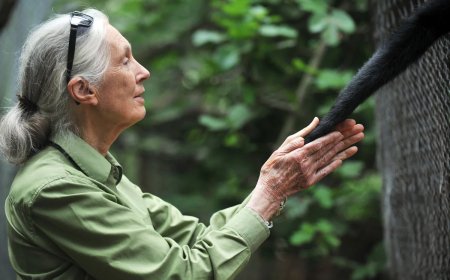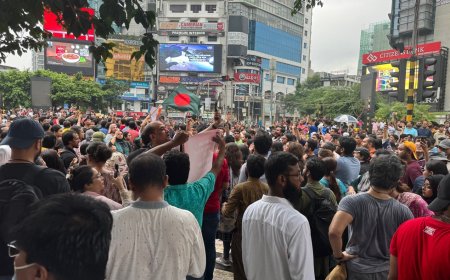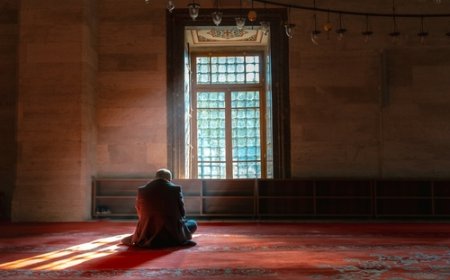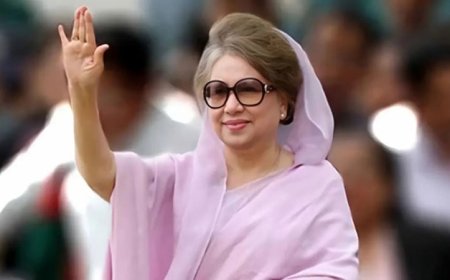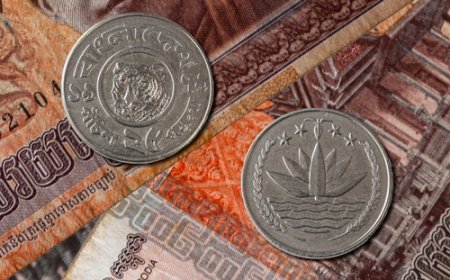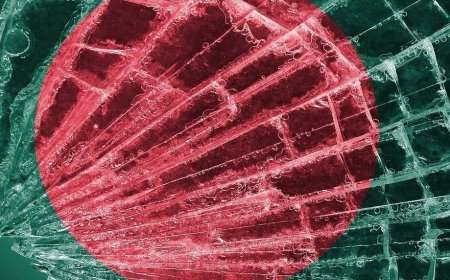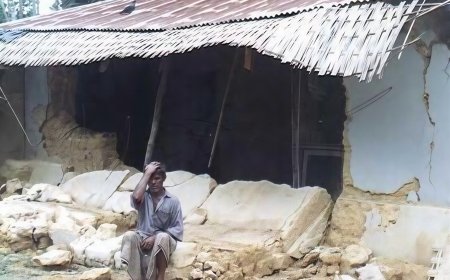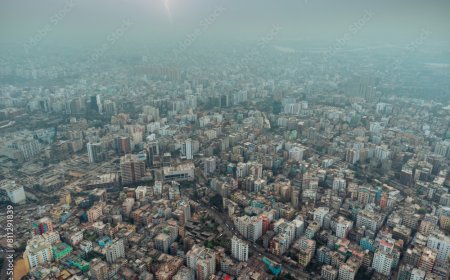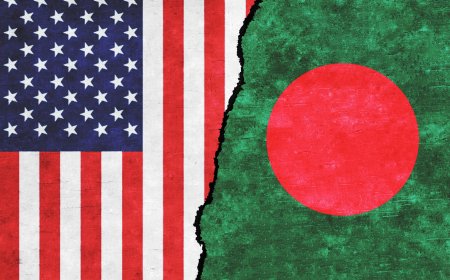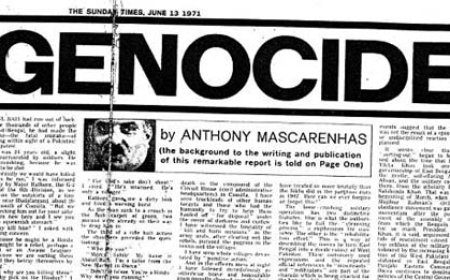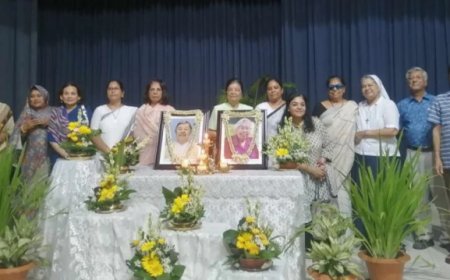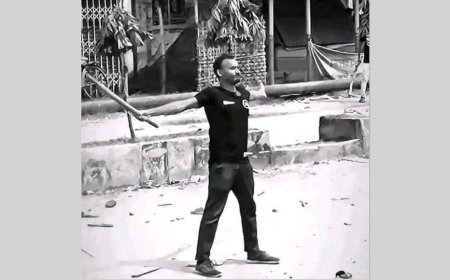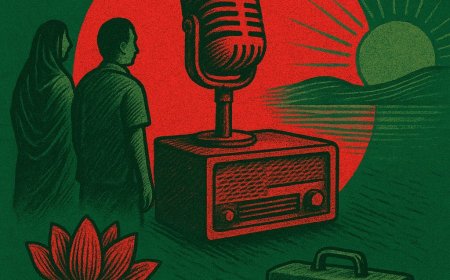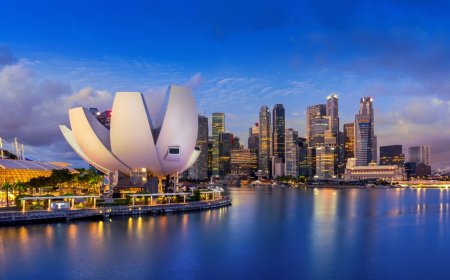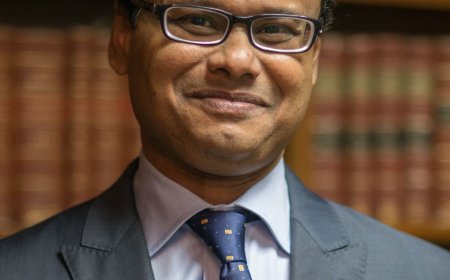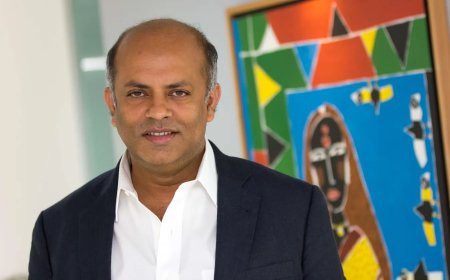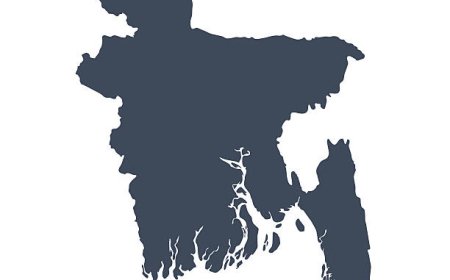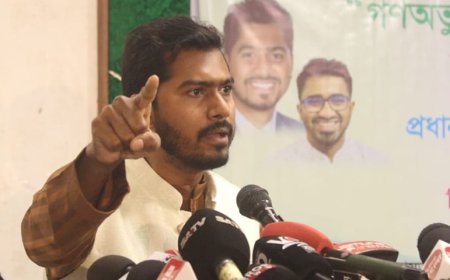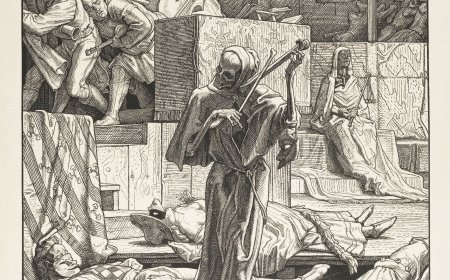From Exile to Awakening
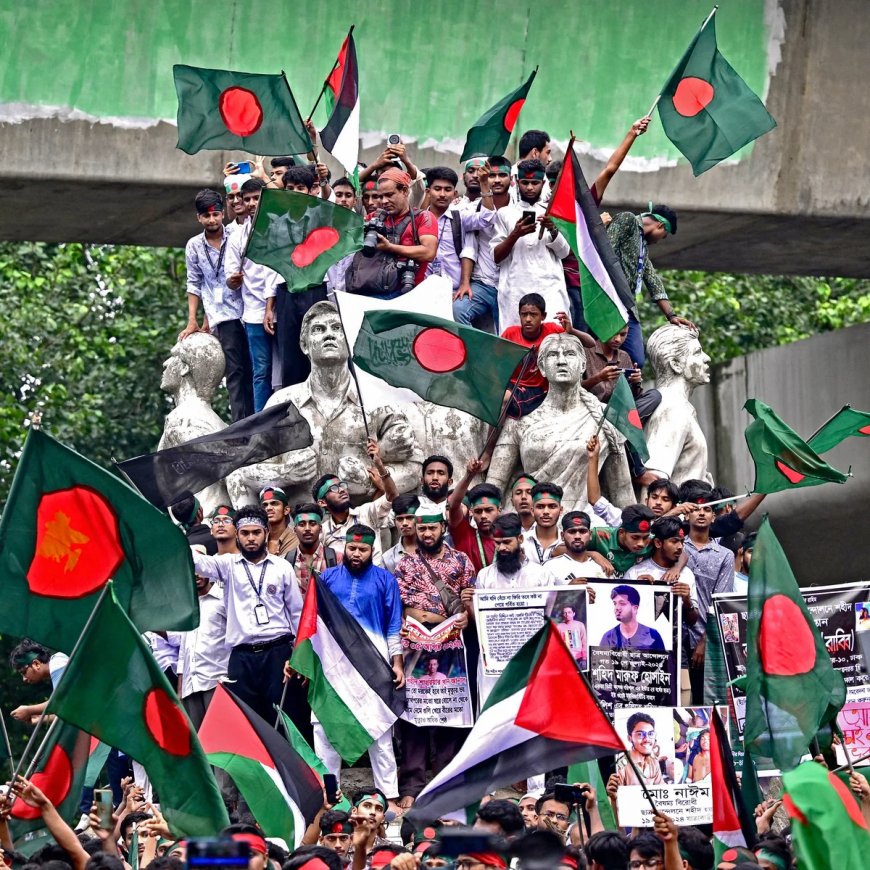
It felt like Obi-Wan Kenobi’s exile on the desert planet Tatooine. After the return, or the revenge, of Hasina, after failure of all the resistance efforts of 2012-13-14, 2018’s last try for a peaceful resolution of the decade long fascist autocracy with an all party electoral alliance, and total failure to resist 2024’s threepeat farce of an election — it was a long, hopeless exile, waiting for the force to awaken, someday.
My non-resident Bangladeshi activist life began around the turn of the century in 2000, protesting and organizing against the ruling Awami League MP Joynal Hazari’s atrocious activities. I was part of a group effort — under the banner of an organization called Drishtipat, along with Asif Saleh (currently the BRAC Executive Director), Naeem Mahaiemen (now a professor at Columbia), and many other individuals I still consider my best friends.
When 1/11 of 2007 happened, it was more of a solo war for me. I felt leading a one-person resistance army against the military regime of General Moeen U Ahmed and his civilian facade, Fakhruddin Ahmed. From my blogsite, ‘In the Middle of Nowhere,’ I ran a resistance war against the 1/11 regime, which was initially heavily supported and backed by civil society and most of my former colleagues in Drishtipat. At that time, ‘In the Middle of Nowhere’ became the leading, if not the only, voice of resistance against the military-civil society misadventure to derail and mould the democratic process in Bangladesh. My campaigns of 2000 and those between 2007 and 2009 ended with my conviction coming out victorious. 2007’s 1/11 regime quickly lost its total steam and ran like a dog with its tail between its legs.
This series of victories gave me the confidence, connections, and clout to remain a center-stage figure in the future NRB democratic resistance struggles for the cause of democracy and good governance-loving people of Bangladesh.
The Awami League returned to power in 2008 with an overwhelming election victory, which I have always attributed to a combination of the public's rebuke of the BNP’s misrule between 2001 and 2006, as well as the civil bureaucracy, media, civil society, and military's conspiracy against the BNP.
And soon after that, all our decades-long fears about the Awami League and the Sheikh family came true. Sheikh Hasina took only a few years to establish her authoritarian rule under the guise of democracy and remove the constitutional provisions for fair, participatory elections at the end of each five-year term.
With that, the dark decade of Bangladesh began. The state’s cruel persecution of its citizens, trampling of all sorts of fundamental human rights, enforced disappearance, extra-judicial killings, and hundreds of thousands of baseless state-imposed litigations wreaked havoc on the opposition democracy activists and the country as a whole.
The farce of three-peat elections took place without the people's participation. The media, judiciary, bureaucracy, and armed forces all became organs of the repressive ruling regime.
It was like the Galactic Empire on the desert planet of Tatooine. For me, these were the long years of exile from activism, waiting for the force to awaken.
The years between 2013 and 2024 were the years of the reign of terror in Bangladesh. Rampant killings, enforced disappearances of even senior political figures, brought an era never seen before in this region. Even an American citizen like me, living in the USA, was afraid of state persecution. It was impossible to talk politics with people in Bangladesh. They were too scared to speak. Between 2008 and 2024, among all the activism, a few still stand out in my mind. During the 2018 election, I helped manage the social media pages of the opposition alliance, the Jatiya Oikya Front. At that time, the page was jointly moderated, anonymously, by Tasneem Khalil and Pinaki Bhattacharya. During that period, the Hasina regime imposed such a culture of fear in Bangladesh that none of the moderators were comfortable publicly exhibiting our involvement with Jatiya Oikya Front (JOF) social media activism. As we needed some video commercials for the JOF campaign, I sought the help of Nazim Farhan Chowdhury. That was the first time I heard of the encrypted messaging app ‘Signal’. I had to download the ‘Signal’ app to communicate with Farhan. He could not find actors brave enough to participate in the opposition political campaign’s commercial. Farhan made a few ads from West Bengal for the JOF campaign. One of the ads featured a famous line that later became a signature line of resistance: “Deshta karo Baper na.”
Around mid-July 2024, I started noticing some chatter about the re-awakening of the student-led quota movement. But, as skeptical as I was after a series of failures, I didn't pay much attention to it. I was heartbroken by my memories of the 2018 school kids' road safety movement and quota movement's failure.
A photo of a young man started appearing on my social media timeline. A day went by — my skeptical and exiled mind kept ignoring the ever-swelling Facebook algorithmic push of the photo of the young man, wearing a black outfit, his hands stretched.
Then suddenly, I woke up from a long slumber after reading this social media post from the AFP bureau chief in Dhaka, journalist Shafiqul Alam.
“When Abu Sayeed was hit by a bullet, he summoned enough courage to try to stand tall for one more time. A friend came close and Abu Sayeed staggered and tried to lean on to him.
Moments later he fell on the ground, never to rise again. My son, we fell with you. The entire Bangladesh with all 148,460 square kilometres fell with you. Will we be standing tall again?
#DhakaDiary”
I suddenly felt the force, and a significant disturbance in the force occurred. I felt something was happening.
I always had a theory about the longevity of any government in Bangladesh. I firmly believed that, however strong, protected, and secure a government may seem, it can't survive beyond its shelf life. Keeping Ershad’s survival of nine years as the index reference, I assumed Hasina may at most survive 9X2 = 18 years. And with that theory and calculation in mind, I was hopeful some change would come after the 2024 election and that Hasina would be unable to continue with her fourth term. Even in internal communications, I was sometimes fairly confident that a change would occur after the 2024 election. I did not know how this would happen or what the trigger would be. I thought a Sri Lanka-style economic collapse might ensue the regime's collapse within a few months after the election.
Anyway, I started seeing the quota movement gaining serious traction. I couldn't believe my ears when I heard that general students kicked out BCL from most of the student halls/ dorms and campuses. It felt like the resistance had finally crossed the Rubicon. An astute social media commentary by another journalist, UNB executive editor Shayan Khan, gave me the confidence that the resistance would not fail this time around. Shayan wrote -
“The pivotal date in the movement for me was July 14, when students in the 5 women's halls of Dhaka University broke their locks and came out, just hours after Sheikh Hasina’s infamous 'Rajakar' comment. They came out around 11pm, soon to be joined by students from the men's halls, and later by students around the country. Me and my brother Murad were working to compile the reports coming in from our campus correspondents. The first injuries inflicted by Chhatra League during the movement were also on this night - at Chittagong University. The next day (July 15th) they would wreak havoc on the DU campus of course, setting the government and protesters on two paths that would never be reconciled.
The night was pivotal not only for the fact that the students came out again, since earlier that day the coordinators had actually gone and met the president, or his secretary, and presented a set of proposals through which the quota provision in govt jobs could be reformed. There was no programme set for the next day. The movement was, for all intents and purposes, on the verge of wrapping up. Then came Hasina's parley with the two journalists.
Apart from the fact that the women led the way, two things stood out about the way they reacted that night: one, they didn’t become defensive at the rajakar reference. This is truly where ‘Gen Z’ set itself apart from generations that have come before. To have the chutzpah to receive that insult and throw it back at Hasina’s face with “Ami ke? Tumi ke? Rajakar, Rajakar,” was, in a word, groundbreaking. (The “Ke boleche, ke boleche? Shoirachar, shoirachar” came later as a bit of a ‘shushil’ compromise, let’s admit). It completely disarmed their opponents, who started sounding childish and lost in response with their “How can students of Dhaka University call themselves Rajakar?” Boohooo.
Secondly, they zeroed in on Hasina as the cause of their angst. For over 15 years, even those who dared to criticise the government had held their fire when it came to the figure of the prime minister. We would often (not always) satisfy ourselves with “Her advisers are misguiding her”, or “Those around her are the real culprits”. Here, they were venting their anger at precisely what she had said. There was no escaping it. The corner they turned that night would set the stage for their later 9-point demand, in which number 1 would be that the prime minister apologise for the deaths that started occurring from July 16 (unmet, it was the main reason behind Nahid being taken in and tortured overnight on July 20), and the eventual “Ek Dofa”: the resignation of her government. First articulated by the students on August 3, and met within 48 hours, with the added bonus of fleeing the country.
But in hindsight, the edifice on which the AL’s misrule of 15 years was built, had been crushed on the night of July 14.”
As the movement gained momentum in the streets, it also gained momentum in the WhatsApp groups, which had been lying silent after failing to stop the Awami League’s 2024 election. Old threads/ groups got reenergized, and new groups started popping up. I became a member of at least a dozen groups. The global diaspora united with a single goal and resolve.
Unprecedented NRB activism ensued. There's hardly any major city or university where a Bangladesh protest hasn't occurred. A massive demonstration took place at my city's UT Austin campus. The crowd copied the slogans being changed on the streets of Bangladesh.
Saipan is the capital of a small, remote Pacific island archipelago. This is one of the most isolated and remote corners on the planet, which was only heard of during the USA's Second World War Pacific campaign against Japan. In that remote Island, Migrant Bangladeshis gathered with their families with placards in the city’s main thoroughfare supporting the protesters in Bangladesh. Prince Edward Island is a northern Canadian region, near the tundra, where dozens of Bangladeshis protested. St John is the easternmost point of Canada, a recess in the north Atlantic. Students gathered in dozens to protest in St John. From the top of the world to the bottom of the world - Adelaide, Australia - protest rallies supporting the cause of Bangladeshi students reverberated all over the world. From Uganda to Uruguay, diaspora Bangladeshis gathered in public squares to demand democracy and justice in Bangladesh.
One of the lesser-discussed aspects of the 2024 Mass Uprising is the active participation of the global academic community in support of the movement. In addition to issuing statements and public remarks in solidarity with the protesters, academics from around the world contributed to the discourse through organized conferences at different academic centers worldwide. I am aware of at least three significant events at three U.S. universities.
The first seminar was organized at my initiative, hosted by the South Asia Institute at the University of Texas at Austin. Although this fully virtual event was planned on July 26, due to summer vacation and conflicting with other scheduled events, it was intended for August 6. Initially, we named the union event “A July Like No Other: The Bloody Student Uprising in Bangladesh.” But as we entered August, we changed the event name to ‘A Monsoon Like No Other: The Bloody Student Uprising in Bangladesh.’ And for good reasons, on August 5, we again had to change the event title, “A Monsoon Like No Other, Students, Courage and Hope in Bangladesh.”
Subsequently, in September 2024, a major hybrid event, “The Monsoon Revolution in Bangladesh,” was held under the joint sponsorship of the MacMillan Center South Asian Studies Council and the Yale Research Initiative on Innovation & Scale (Y-RISE) at Yale University. Professor Mushfiq Mobarak, the Faculty Director of Y-RISE, arranged the event. Among the three academic events, this was the most elaborate and vibrant. I was among the invited speakers in the seminar.
The third initiative occurred at the Subir and Malini Chowdhury Center for Bangladesh Studies at the University of California, Berkeley. The Center’s Director, Dr. Elora Shehabuddin, organized a six-episode conference series titled “Biplob in Bangladesh.”
Diaspora virtual activism also started producing positive and concrete outcomes. Two significant events, the Probashi Zoom call and the Maxar Satellite activism, have dedicated chapters in the book, which is being published later this month. While the Probashi Zoom call was my idea and a project I led, I was involved in all the decision-making processes in both projects. I was literally in the room when all decisions and processes were formulated.
The idea of a Zoom call originated from my experience with COVID-19 pandemic activism. During the early days of the COVID pandemic, when the world sought guidance on addressing the menace, I, being at the forefront of the war against COVID in the USA, organized several all-hands-on-deck virtual town halls with the physician communities in Bangladesh. The impact of all those virtual townhalls was eye-opening for me. It immensely helped the transfer of knowledge and better trained Bangladeshi physicians. Those virtual international town halls had a war-prep-like feel and significantly helped boost physicians' morale, knowledge, and experience.
I wanted to re-enact a similar event - but not against Covid, rather against the killer autocrat of Bangladesh. Thus, the idea of the Probashi Zoom call was born. We made a team with Shafiqur Rahman, Ehteshamul Haque, and Zia Hassan. A special Zoom subscription was needed to host such a big Zoom event with space for tens of thousands of participants. None of us had that. DC-based lawyer Ehteshamul Haque came to the rescue. He purchased the expensive subscription only for the event. For technical help, Mahmudul Khan Apel, Imtiaz Mirza, and Md Rashed jumped in enthusiastically. We gave ourselves a total of 24 hours for all preparation.
We planned to gather all major online influencers who were vocal and active against Bangladesh's tyranny over the last 16 years. From five time zones and with substantial ideological differences, gathering all these high-maintenance personalities under one platform was a significant challenge. While Ehtesham, Shafiq, Apel, et al got to work to tie all the loose technical and logistical ends, I sat with my phone. I called Prof. Dr. Asif Nazrul, the renowned Dhaka University law professor and the most prominent Bangladesh-based dissident voice. I called Pinaki Da, the enigmatic Pinaki Bhartacharya. I called Tasneem Khalil, Faham Abdus Salam, Zulkarnain Saer Sami, Shahed Alam, Monir Haider, and Rezwana Hassan. Monir Haider connected me to Mushfiq Fazal Ansari, and Zia Hasan added Badiul Alam Majumdar.
Every single person agreed to join the event without a second of hesitation. I had a grand plan to include a musical performance between speeches. I contacted Arup Rahee. Someone promised to bring Biplob. Biplob probably couldn't be contacted. Arup Rahee could not perform due to technological difficulties and delivered a speech instead.
I proposed a male and female emcee for the event, and thought of Taufique Joardar and Dilshana Parul. Both agreed enthusiastically. Taufiq Joardar also contacted student leader Umama Fatema, and Umama joined our event. Nasirul Shohan represented diaspora students and was very inspiring.
From the conception of the idea to the execution of the event, we only had around 30 hours. We worked around the clock at breakneck speed.
Taufique and Dilshana did a stupendous job. Between calling the speakers, they read the names of the martyrs. It was a somber and emotional affair.
The event turned out to be a resounding success. Thousands of viewers attended it via Zoom, Facebook, and YouTube. During 16 years of anti-Hasina resistance, this was the first time many on-the-ground and online influencers set aside their differences and gathered on one platform for a common cause. It was such an anticipated and powerful event that people started asking us whether we would announce a ‘probashi sorkar’!
We finished the Zoom call around 1pm Central US time, and around 3-4pm, five minutes apart, I received two independent phone calls with an identical proposal. Shafquat Rabee Anik and Yale Professor Mushfique Mubarak called about using the Maxar satellite to monitor events around Ganavavan on August 5. Starting at 6pm Central USA time, approximately 5am Dhaka time on August 5, the Maxar satellite system began monitoring and capturing minute-by-minute high-resolution images of the Gabavaban area from space.
There was a third major activism that I was somewhat aware of or involved in. However, due to professional secrecy requirements and government/company policy issues, I cannot discuss that specific activism. However, the results of that intervention were evident on social media. The visual clips of the July movement, the clips of violent shooting which otherwise would have been downgraded or even blocked by the Facebook algorithm, were playing again and again in repeat reel loops on Facebook and Instagram. These video clips added more fuel to the mass public unrest against the Bangladesh regime and eventually led to the mass uprising.
Around 3am on the morning of August 5, 2pm Dhaka time, I was awakened from sleep to be notified that Sheikh Hasina had fled the country in a helicopter.
After many sleepless nights, earlier that night, before going to bed, I took a sleeping pill and put my phone into silent mode. Waking up, I looked at my phone; there were 37 missed calls and hundreds of messages from all over the world. Jyoti Rahman called, Saimum Parvez called, Israfil Khasru called, Faham called, and many others. The WhatsApp threads were on fire.
Over a decade ago, on the night of May 5, 2013, seeing the veracity of the Shapla chatter massacre, I wrote a piece in the Alal I Dulal platform. The title of the piece was “End of an Era”. It was written under the pseudonym Gilti Mia. In that post, I argued that the new era of democracy we ushered in with the 1991 election had just ended, that the Hasina regime would never allow a fair election, and that it would never take any chance of losing an election. I predicted that the government would fall under violent circumstances. A whole decade had passed since the prediction was made. Between July 15 and August 5, over 1400 people were killed. And during the previous 12 years, over five thousand more lost their lives.
We finally freed ourselves of a brutal dictator. But it took a tremendous toll on our nation.
Dr Rumi Ahmed Khan is a Professor at the South Asia Institute, University of Texas, Austin; the Convenor of the Bangladesh Research Analysis and Information Network; and a pioneer of democracy and human rights activism among the expatriate Bangladeshi communities. This essay will be published in a book on diaspora and citizens’ activism during the July Uprising.
What's Your Reaction?








